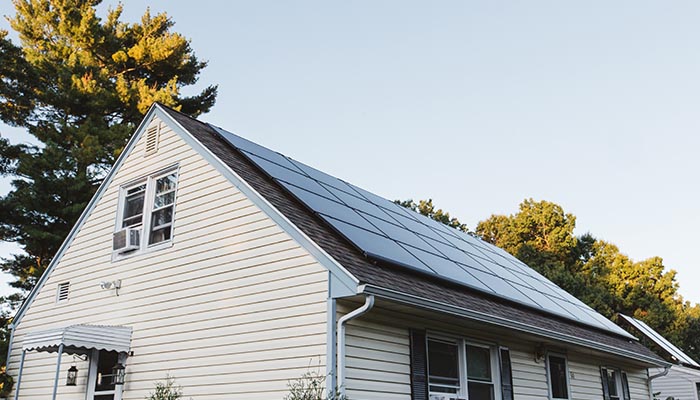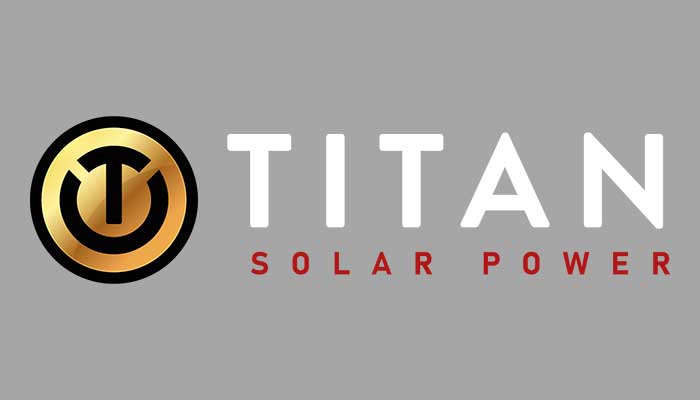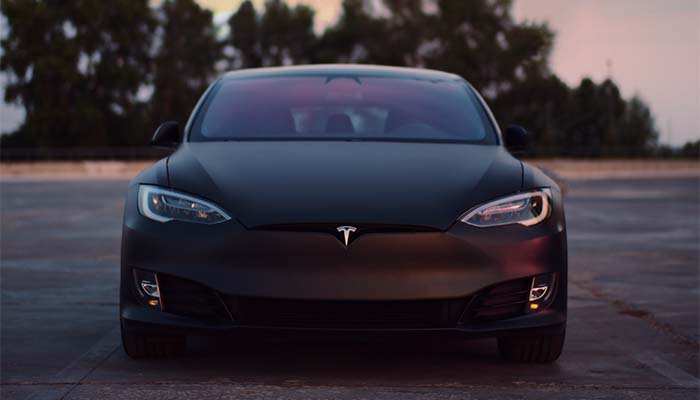
Updated December 11, 2021
Solar power has many benefits, especially for the planet, but a home solar system should also save you money. The question is, how much can you save? And will it be enough to offset the upfront cost of your solar panels?
To find out, we’ll need to look at how solar power affects your relationship with your utility company. Then, we can run some numbers, and come up with a ballpark figure. Let’s get started!
Table of Contents
Will Solar Panels Make My Electric Bill Go Away?
One common myth about solar power is that you can get rid of your whole electrical bill. Technically, this is possible, if you build an off-grid system. But off-grid systems require large battery backups, and you won’t have access to grid power if your power reserves run out. For this reason, the vast majority of homeowners use a grid-connected system. This allows you to feed power into the grid when you’re overproducing, and draw power back from the grid at night.
In most states, grid-tied solar power works on a principle called net metering. Under net metering, you still receive a monthly bill from the power company. However, any solar energy you’ve fed into the grid will be applied to your bill as a credit. In other words, you may or may not pay for electricity, depending on how much you’ve produced.
For example, let’s say you used 800kWh of power last month, but your solar panels produced 600kWh. Under net metering, you’d pay for the net power drawn from the grid, or 200kWh. So you’d still be paying money, but you’d be paying a lot less than you would without a solar panel.
Now, let’s say you doubled the number of solar panels, and you’re producing 1,200kWh a month. In that case, you’d receive full credit for the 800kWh you used, and the remaining 400kWh would be rolled over as a credit on next month’s bill. So you might pay nothing all summer, then use the credits over the winter when your solar panels aren’t producing as much.
In short, solar panels won’t make your electric bill go away, but they will definitely save you money. So, how much can you expect to save?
What Factors Affect My Savings?
As you might imagine, the most important factor in determining savings is the price of your solar system. As of 2021, the average cost for a solar panel system in the US is between $11,144 and $14,696, depending on your state. This number includes applicable tax credits.
As a general rule, costs for solar panels have been dropping for over a decade. With further advances, you can expect to see even lower prices over the long term. That said, the industry has been affected by tariffs on Chinese-made solar panels. Until domestic production ramps up, short-term costs for some solar systems are likely to rise. Here are a few other factors that affect your savings.
Sun and Shade
The amount and intensity of sunlight have a direct effect on how much power your solar panels will generate. If you’re in the southwest, for example, you get powerful, direct sunshine for most of the year. If you’re in the northeast, it’s cloudy much of the year, and you’re getting very little sun in winter.
The exact placement of a panel can also make a big difference. If your solar panel is blocked by a tree or shaded by a building part of the day, it’s not going to be as effective. Similarly, southward-facing panels will get more sun than northward-facing panels – at least in the Northern Hemisphere.
Size and Number of Panels
All else being equal, more, larger solar panels will provide more electricity than fewer, smaller panels. So the larger your installation, the more money you’ll save every month. On the other hand, a larger installation will also cost more upfront.
Solar Tax Credits
Currently, the US Congress has authorized a tax credit on solar systems installed through the end of 2022. This tax credit is equivalent to 26% of the cost of the system. Keep in mind that as with all things tax-related, this is subject to change. In 2019, for example, the credit was for 30%. So while the 26% credit is locked in for next year, following years may see a higher credit, a lower credit, or no credit at all.
How Much Can I Save?
At this point, you’re probably wondering how much you can expect to save. Let’s start with the basics. For the year 2020, the average US household consumed 893kWh of electricity per month, or 10,715kWh per year. At the average US residential cost of 14.19 cents per kWh, that works out to a monthly electrical bill of $126.72, or $1,520.46 a year.
Meanwhile, as of 2021, the average solar panel costs around $2.50 per watt. This is a very rough estimate, and it can vary considerably by state. Consumer Affairs has a complete state-by-state breakdown if you want more detailed information.
Doing the Math
With this information, we’re ready to do some math. Let’s say you’re a perfectly average household, and use 10,715kWh per year. Now let’s say you install a 7kWp solar panel. This means that in one hour of peak operation, the panel will produce 7kWh of power. Now let’s assume that 7kWp system is producing for about 1,000 hours a year, which is a good rough estimate. This means you’d produce 7,000kWh of power per year.
At $2.50 per watt, a 7kWp system would cost $17,500. After a 26% tax credit, that cost is reduced to $12,950. Meanwhile, you’re saving 7,000kWh per year, or $993.30 at a rate of 14.19 cents per kWh. Assuming energy costs stay the same, your panel will pay for itself in just over 13 years ($12,950 ÷ $993.30), after which you’ll save $993.30 per year for the life of the panel. In practice, energy costs will tend to go up, so your panel will actually pay for itself sooner, and save you more as time goes on.
Keep in mind that this is just an example. But if you know your own energy costs and solar panel costs, it’s easy to do the math for yourself.
How to Read Your Electric Bill
We’ve talked about how much you can potentially save. But once your system is installed, your power bill is going to change. Here’s how to understand your bill, and the types of charges you’re liable to see.
Electrical Consumption
When you’re using grid-tied solar power, your relationship to the grid gets more complicated. On a normal power bill, you would only see how much electricity you used. On your new bill, you’re going to see two numbers. First, you’ll see the amount of power you’ve drawn from the grid. Next, you see the amount of excess power you’ve sent back to the grid.
To determine your net usage, the power company subtracts the power you’ve delivered from the power you’ve taken. The result is your total electrical consumption, which is the amount of power you’ll be charged for. If the result is negative, it gets applied as a credit on your next monthly bill.
Service Fees
Regardless of how much you paid for electricity – or even if it was free – you’ll see a service fee on your bill. This is a flat monthly charge that pays for the electric company’s services, such as line maintenance and customer phone service. It’s normally just a few dollars, but it still needs to be paid every month.
Taxes
Like service fees, taxes are a non-optional part of your bill. Unlike service fees, though, taxes are typically tied to the amount of power you’ve used. They’re not tied to your net power usage, but to the total amount taken from the grid. This is important to remember because even if you’re using net-negative power, you’ll still be taking it from the grid at night. Unless you have a powerful backup battery, you’re going to pay at least some amount of money in taxes.
Your Annual Statement
Each year, you’ll get an annual balance sheet from your power company, which is often referred to as a “true-up statement.” This is simply an accounting of all your electrical usage through the year, including all the credits you’ve earned from your solar power system.
In most cases, this is just a nice piece of paper that tells you how much money you’ve saved. That said, it’s still important to read your statement. There may be charges left over from the last month’s bill.
Remember, solar power credits carry over from month to month, but not from year to year. Any credits on your annual statement will disappear at the end of the next month’s billing cycle. If you’ve got a ton of credit, feel free to crank up a bunch of space heaters, or perform other power-intensive activities. You might as well use your credits while you can!



